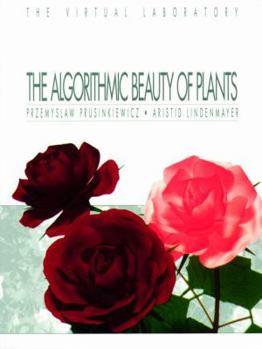The Algorithmic Beauty of Plants (The Virtual Laboratory)
Select Format
Select Condition 
Book Overview
The beauty of plants has attracted the attention of mathematicians for Mathematics centuries. Conspicuous geometric features such as the bilateral sym- and beauty metry of leaves, the rotational symmetry of flowers, and the helical arrangements of scales in pine cones have been studied most exten- sively. This focus is reflected in a quotation from Weyl 159, page 3], "Beauty is bound up with symmetry. " This book explores two other factors that organize plant structures and therefore contribute to their beauty. The first is the elegance and relative simplicity of developmental algorithms, that is, the rules which describe plant development in time. The second is self-similarity, char- acterized by Mandelbrot 95, page 34] as follows: When each piece of a shape is geometrically similar to the whole, both the shape and the cascade that generate it are called self-similar. This corresponds with the biological phenomenon described by Herman, Lindenmayer and Rozenberg 61]: In many growthprocesses of living organisms, especially of plants, regularly repeated appearances of certain multicel- lular structures are readily noticeable. . . . In the case of a compound leaf, for instance, some of the lobes (or leaflets), which are parts of a leaf at an advanced stage, have the same shape as the whole leaf has at an earlier stage. Thus, self-similarity in plants is a result of developmental processes. Growth and By emphasizing the relationship between growth and form, this book form follows a long tradition in biology.
Format:Paperback
Language:English
ISBN:0387946764
ISBN13:9780387946764
Release Date:March 1996
Publisher:Springer
Length:228 Pages
Weight:1.72 lbs.
Dimensions:0.5" x 8.5" x 11.0"
Related Subjects
Algorithms Artificial Intelligence Biological Sciences Biology & Life Sciences Botany Computer Science Computers Computers & Technology Graphic Design Graphics & Multimedia Graphics & Visualization Math Mathematics Modeling & Simulation Nature Programming Science Science & Math Science & Scientists Science & TechnologyCustomer Reviews
3 ratings
Beautiful, technical, and broad
Published by Thriftbooks.com User , 15 years ago
A beautiful book with excellent color plates; it gives a precisely mathematical, yet not arcane, presentation of the ways botanical forms can be generated algorithmically. This gives insight into real plants and a fun set of computational tools to play with. I discovered this book years ago, as a teenager, and just bought a copy to relive its pleasures.
All the detail you need to produce your own graphical plants
Published by Thriftbooks.com User , 18 years ago
The beauty of plants has attracted the interest of mathematicians for centuries. Plants have many conspicuous geometric features such as symmetry in their leaves, rotational symmetry in their flowers, and then there are the interesting helical arrangements of pine cone scales. This book examines two factors that organize plant structures and therefore contribute to their beauty. The first is the simple elegance of the rules which describe plant development in relation to time. The second is self-similarity as characterized by Mandelbrot. This book applies the basic idea inherent in recursive graphics programming to modeling natural organic phenomena to the greatest degree of accuracy possible. This book uses L-systems, which is a method of specifying rules that enables very complex ideas to be expressed in a very exact way. The book contains no information on specific programming language implementation. However, the L-system specification is given in enough detail that an implementation of a basic L-system compiler should be attainable by most programmers with a talent for efficient algorithms implementation and sufficient motivation. All of the graphics are done using either two or three dimensional turtle commands, which are also easily adapted to fit into whatever compiler you choose. Efficient display routines will require some work, and as most of the algorithms described produce very large amounts of data, speed is very important for all shapes apart from the most basic structures. The results of using an L-system is quite impressive. The book contains many photographs of computer generated trees using L-systems that are almost identical to their natural counterparts. The book is very well written, with lots of examples and many illustrations. It starts off as quite easy reading, but by the time it reaches sections on the simulation of internal balancing of cellular structures, the math gets very complex. Although you need an interest in artificial life, graphics, and fractals to find this book interesting or even just comprehensible, you probably also need some skill in the analysis and design of algorithms to make any of the ideas contained in the book a reality. The table of contents is: 1. Graphical Modeling Using L-systems 1 2. Modeling of Trees 51 3. Developmental models of Herbaceous Plants 63 4. Phyllotaxis 99 5. Models of Plant Organs 119 6. Animation of Plant Development 133 7. Modeling of Cellular Layers 145 8. Fractal Properties of Plants 175 A. Software Environment for Plant Modeling 193 B. About the Figures 201 C. Turtle Interpretation of Figures 211
Excellent and beautiful book.
Published by Thriftbooks.com User , 25 years ago
The color plates are quite extraordinary. Knowledge of math helps, but the book pretty much starts at Ground Zero. It is quite useable for those wishing to implement the plant modeling systems described (which is why I purchased it).






